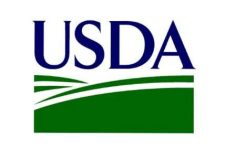Projects Include $132 Million for Rural Health Care, Food Security and Emergency Response Services
WILLARD, Mo., Nov. 19, 2021 – United States Department of Agriculture (USDA) Under Secretary for Rural Development Xochitl Torres Small today announced that USDA is investing $222 million to build and improve critical community facilities (PDF, 729 KB) in 44 states, Guam, Northern Mariana Islands and Puerto Rico. This community infrastructure funding will benefit nearly 2.5 million people in rural communities. It also includes $132 million to support health care, food security, and emergency response services for more than 850,000 rural residents in 37 states.
“The Biden-Harris Administration is delivering on its promise to fight the COVID-19 pandemic and rebuild our economy,” Torres Small said. “Rural Americans need emergency response, hospitals and medical facilities, and USDA’s loans and grants invest in critical infrastructure to make that possible. USDA Rural Development puts rural people at the forefront of investment and opportunity to help us all build back better, stronger, and more resilient.”
USDA is investing in 536 projects through the Community Facilities Direct Loan and Grant Program. The assistance will fund essential community services that will help keep rural America resilient in the face of the COVID-19 pandemic. The projects will finance emergency response vehicles and equipment; build or improve hospitals and clinics; and combat food insecurity.
For example:
• In Iowa, Lee County will use a $165,000 grant to purchase six ambulances. The ambulances will help to provide emergency medical response services to nearly 36,000 rural people.
• In Minnesota, Tri-County Hospital Inc. will use a $42 million loan to build a health care campus in Wadena. The facility will include three emergency bays; two trauma rooms; 14 inpatient rooms; three operating rooms; one endoscopy room; four suites for labor, delivery, recovery and postpartum; 50 clinic rooms; 10 major imaging modalities; and 14 universal platform spaces to support surgery, emergency, imaging, obstetrics and ambulatory services. The larger operating rooms will help expand services, improve technology, and enable robotic surgical procedures. This project will help to improve and expand access to critical health care services for more than 7,200 rural people.
• In New Hampshire, the Taproot Farm and Environmental Education Center will use $37,490 in grants to purchase coolers and freezers to expand access to local food during the pandemic and times of food insecurity. The center’s Root Seller Marketplace also will expand its capacity to collect and safely store surplus produce from farms and gardens before distributing it to local food donor organizations. These improvements will benefit 3,507 rural people.
The investments announced today will support community infrastructure projects in Alabama, Arkansas, Arizona, California, Colorado, Connecticut, Florida, Georgia, Hawaii, Iowa, Illinois, Indiana, Kansas, Kentucky, Massachusetts, Maryland, Maine, Michigan, Minnesota, Missouri, Mississippi, Montana, North Carolina, North Dakota, Nebraska, New Hampshire, New Mexico, New York, Ohio, Oklahoma, Oregon, Pennsylvania, Rhode Island, South Carolina, South Dakota, Tennessee, Texas, Utah, Virginia, Vermont, Washington, Wisconsin, West Virginia, Wyoming, Guam, Northern Mariana Islands and Puerto Rico.
Background:
More than 100 types of projects are eligible for Community Facilities funding. Eligible applicants include municipalities, public bodies, nonprofit organizations, and federally recognized Native American tribes. Projects must be in rural areas with a population of 20,000 or less. For more information, visit www.rd.usda.gov/programs-services/community-facilities/community-facilities-direct-loan-grant-program.
Today’s investments complement the recently announced funding availability under USDA’s Emergency Rural Health Care Grant Program, which also is being administered through the Community Facilities program. Through this program, USDA is making up to $500 million available through the American Rescue Plan to help rural health care facilities, tribes and communities expand access to COVID-19 vaccines, health care services and nutrition assistance.
Under the Emergency Rural Health Care Grant Program, Recovery Grant applications will be accepted on a continual basis until funds are expended. For more information, visit www.rd.usda.gov/erhc.
Interested parties should contact their USDA Rural Development state office for information about additional funding, application procedures and eligibility. Also see the Community Facilities Direct Loan Program Guidance Book for Applicants (PDF, 669 KB) for a detailed overview of the application process.
Under the Biden-Harris Administration, Rural Development provides loans and grants to help expand economic opportunities, create jobs and improve the quality of life for millions of Americans in rural areas. This assistance supports infrastructure improvements; business development; housing; community facilities such as schools, public safety and health care; and high-speed internet access in rural, Tribal and high-poverty areas. For more information, visit www.rd.usda.gov. If you’d like to subscribe to USDA Rural Development updates, visit our GovDelivery subscriber page.
USDA touches the lives of all Americans each day in so many positive ways. Under the Biden-Harris Administration, USDA is transforming America’s food system with a greater focus on more resilient local and regional food production, ensuring access to healthy and nutritious food in all communities, building new markets and streams of income for farmers and producers using climate, smart food and forestry practices, making historic investments in infrastructure and clean energy capabilities in rural America, and committing to equity across the Department by removing systemic barriers and building a workforce more representative of America. To learn more, visit www.usda.gov.
#



